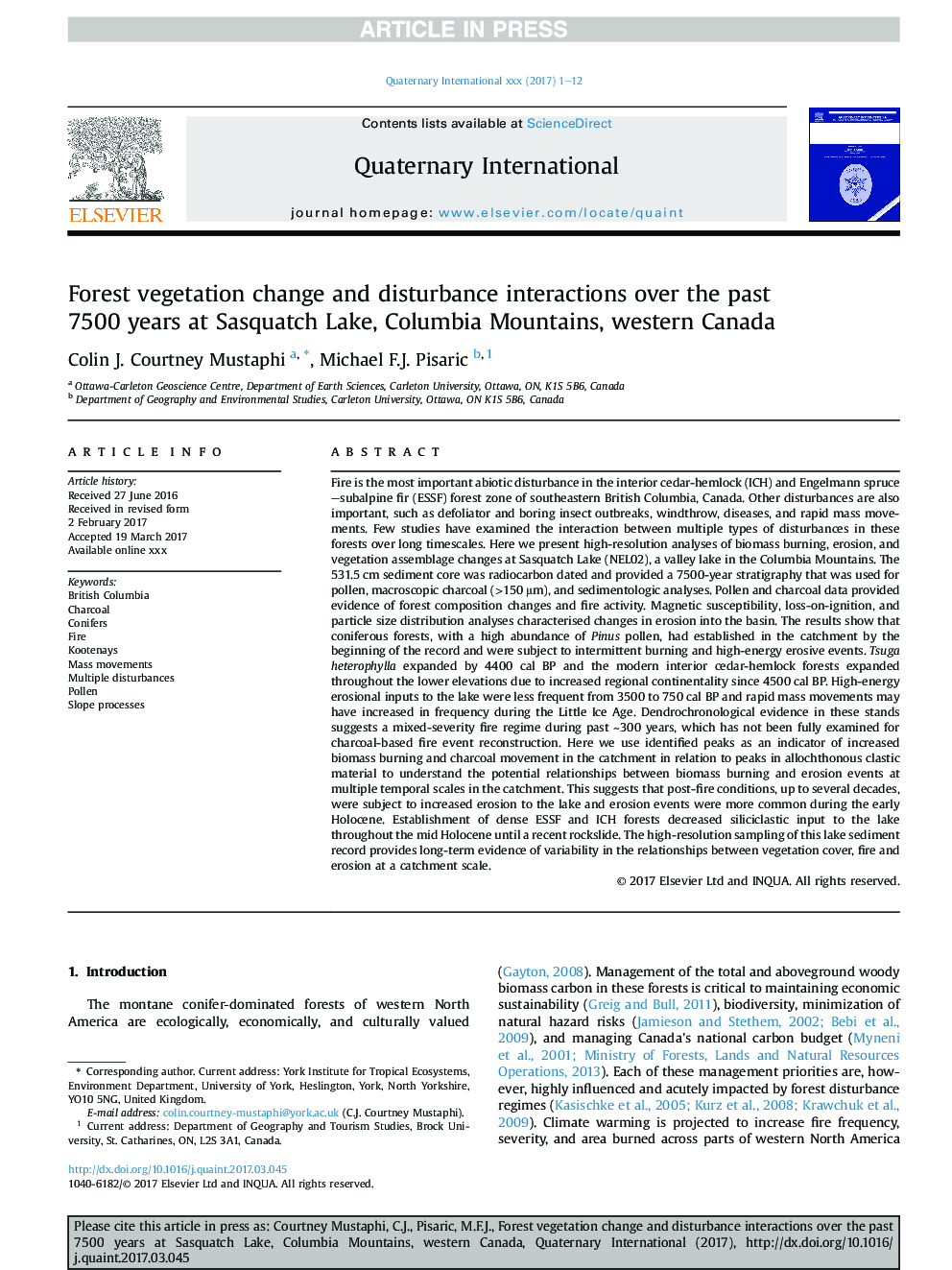| کد مقاله | کد نشریه | سال انتشار | مقاله انگلیسی | نسخه تمام متن |
|---|---|---|---|---|
| 7448859 | 1484023 | 2018 | 12 صفحه PDF | دانلود رایگان |
عنوان انگلیسی مقاله ISI
Forest vegetation change and disturbance interactions over the past 7500 years at Sasquatch Lake, Columbia Mountains, western Canada
دانلود مقاله + سفارش ترجمه
دانلود مقاله ISI انگلیسی
رایگان برای ایرانیان
کلمات کلیدی
موضوعات مرتبط
مهندسی و علوم پایه
علوم زمین و سیارات
زمین شناسی
پیش نمایش صفحه اول مقاله

چکیده انگلیسی
Fire is the most important abiotic disturbance in the interior cedar-hemlock (ICH) and Engelmann spruce-subalpine fir (ESSF) forest zone of southeastern British Columbia, Canada. Other disturbances are also important, such as defoliator and boring insect outbreaks, windthrow, diseases, and rapid mass movements. Few studies have examined the interaction between multiple types of disturbances in these forests over long timescales. Here we present high-resolution analyses of biomass burning, erosion, and vegetation assemblage changes at Sasquatch Lake (NEL02), a valley lake in the Columbia Mountains. The 531.5 cm sediment core was radiocarbon dated and provided a 7500-year stratigraphy that was used for pollen, macroscopic charcoal (>150 μm), and sedimentologic analyses. Pollen and charcoal data provided evidence of forest composition changes and fire activity. Magnetic susceptibility, loss-on-ignition, and particle size distribution analyses characterised changes in erosion into the basin. The results show that coniferous forests, with a high abundance of Pinus pollen, had established in the catchment by the beginning of the record and were subject to intermittent burning and high-energy erosive events. Tsuga heterophylla expanded by 4400 cal BP and the modern interior cedar-hemlock forests expanded throughout the lower elevations due to increased regional continentality since 4500 cal BP. High-energy erosional inputs to the lake were less frequent from 3500 to 750 cal BP and rapid mass movements may have increased in frequency during the Little Ice Age. Dendrochronological evidence in these stands suggests a mixed-severity fire regime during past â¼300 years, which has not been fully examined for charcoal-based fire event reconstruction. Here we use identified peaks as an indicator of increased biomass burning and charcoal movement in the catchment in relation to peaks in allochthonous clastic material to understand the potential relationships between biomass burning and erosion events at multiple temporal scales in the catchment. This suggests that post-fire conditions, up to several decades, were subject to increased erosion to the lake and erosion events were more common during the early Holocene. Establishment of dense ESSF and ICH forests decreased siliciclastic input to the lake throughout the mid Holocene until a recent rockslide. The high-resolution sampling of this lake sediment record provides long-term evidence of variability in the relationships between vegetation cover, fire and erosion at a catchment scale.
ناشر
Database: Elsevier - ScienceDirect (ساینس دایرکت)
Journal: Quaternary International - Volume 488, 20 September 2018, Pages 95-106
Journal: Quaternary International - Volume 488, 20 September 2018, Pages 95-106
نویسندگان
Colin J. Courtney Mustaphi, Michael F.J. Pisaric,